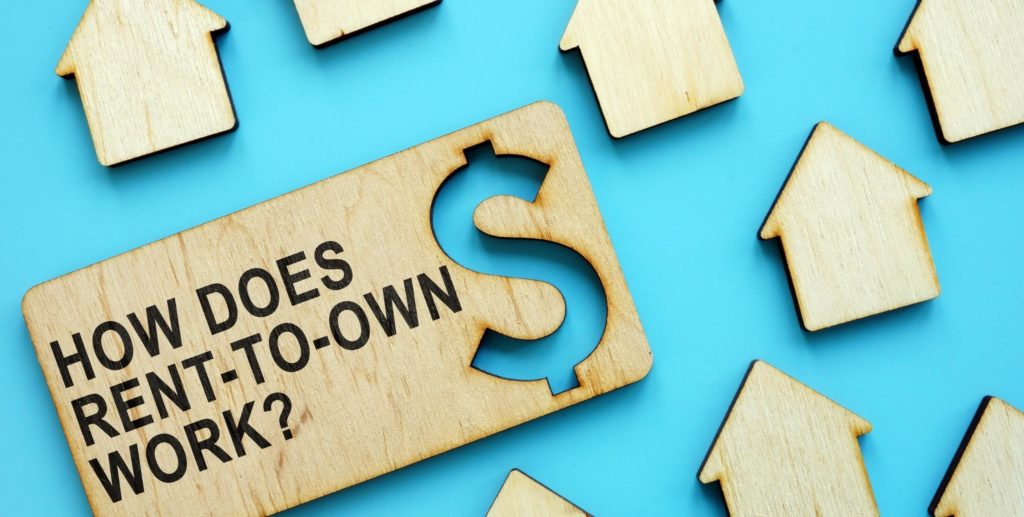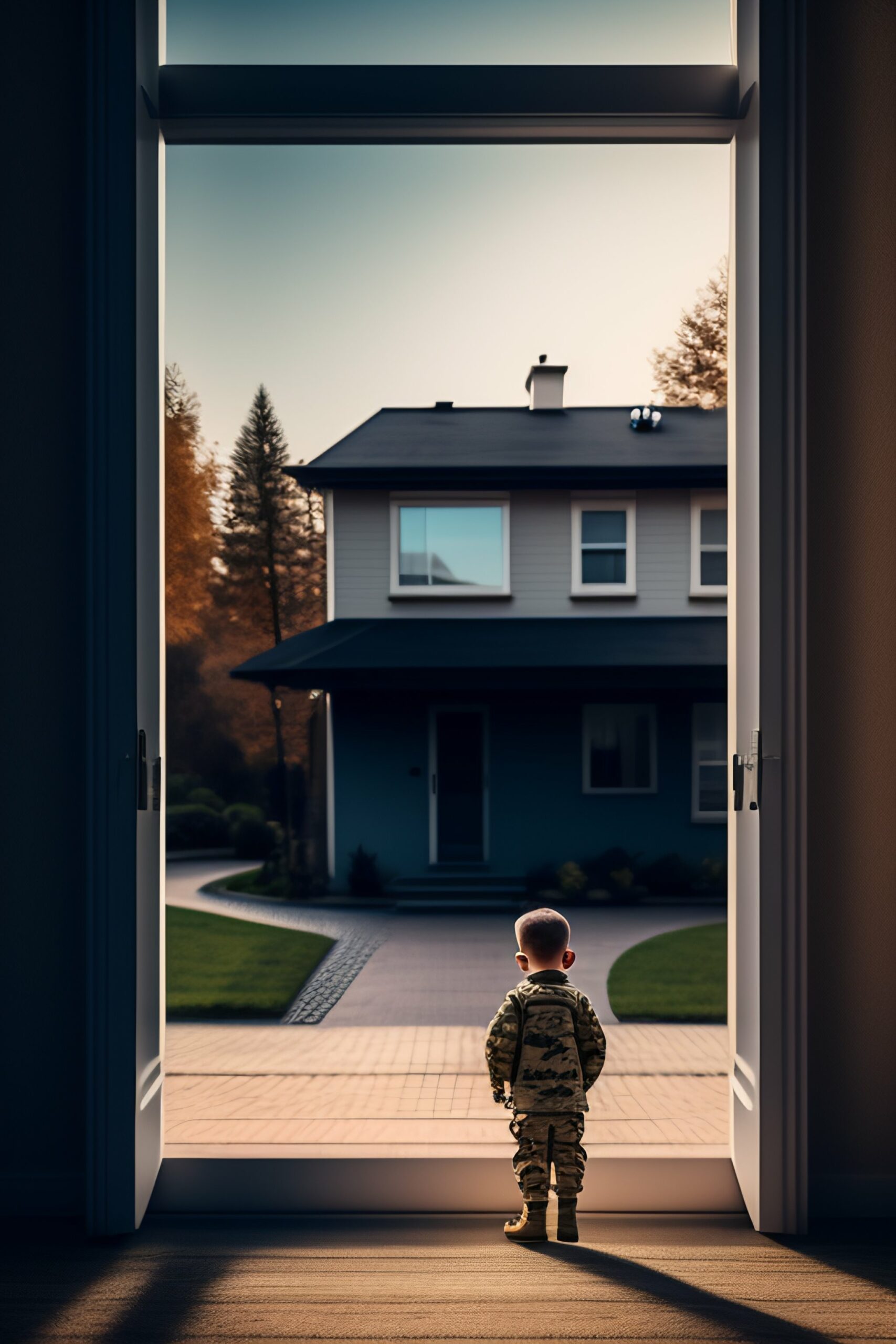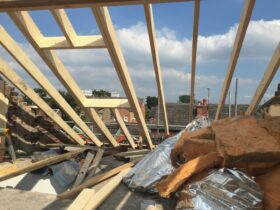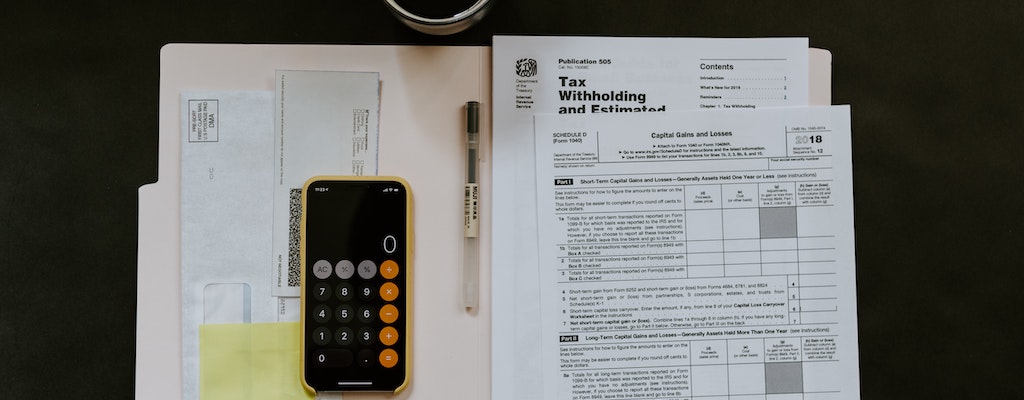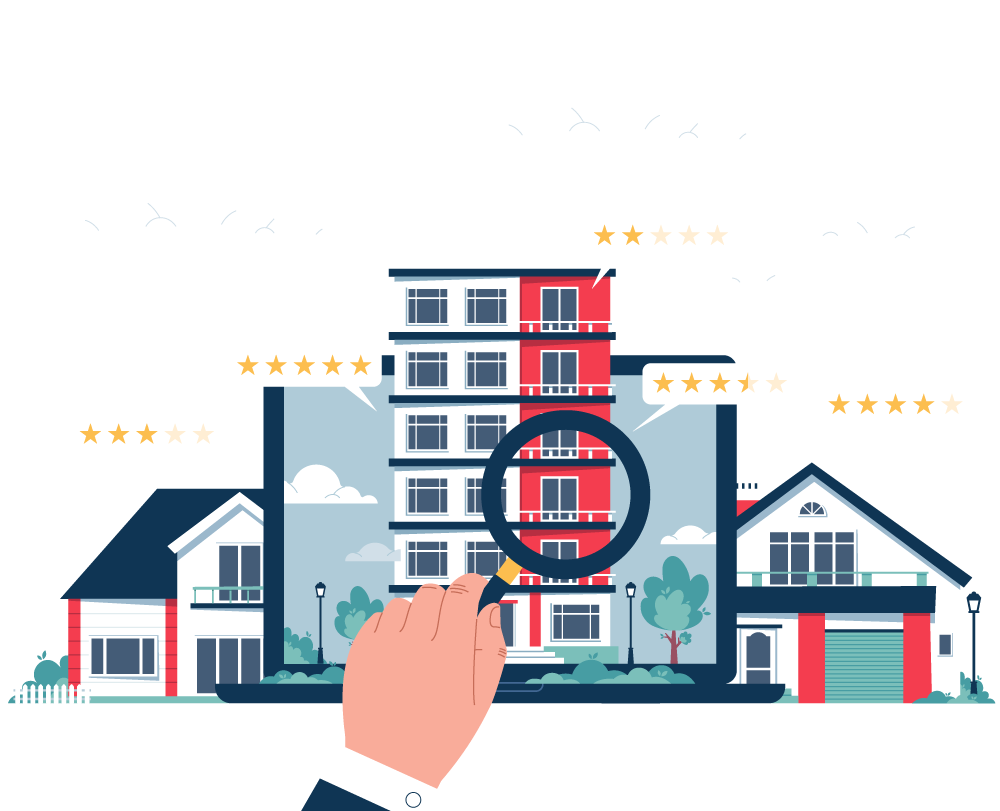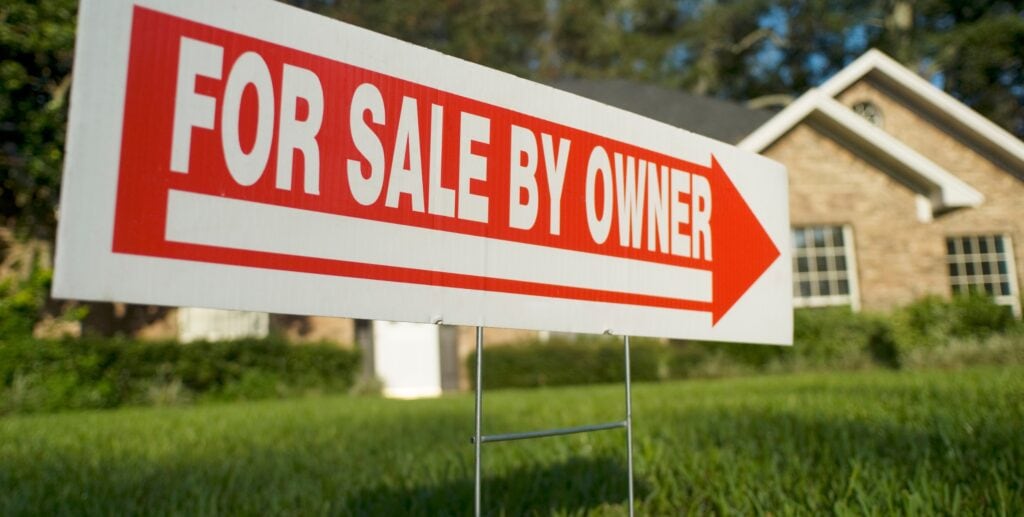It can take a long time to save enough money to make a traditional home purchase or raise your credit score enough to get desirable home loan rates. In the meantime, you wind up with monthly payments that go toward rent, which means you’re typically paying someone else’s mortgage and not building equity.
There’s a third option, though: rent-to-own agreements. How do rent-to-own homes work?
In a rent-to-own agreement, you and the property’s seller agree to have you rent a home for a specified time period, with the option to buy before your lease term expires.
It may sound like the best of both worlds—and it is—for some aspiring homebuyers and sellers. For others, it’s more complicated and costly than it’s worth.
Here, we’ll cover the following:
- What are rent-to-own homes?
- How do rent-to-own homes work?
- Pros and cons of rent-to-own homes
- Types of rent-to-own contracts
- How to buy a rent-to-own home
- Who should consider renting to own?
- How to find rent-to-own homes
What Are Rent-to-Own Homes?
Rent-to-own agreements give you, as a renter, the option to purchase the home after renting it for a determined time period, usually one to three years. When you pay rent, you’ll make monthly payments above the fair market value for the property. The extra money paid goes toward your future down payment and toward the purchase price.
Sometimes, renters also pay an upfront “option fee,” which is 1% to 5% of the home’s purchase price. Option fees are somewhat comparable to earnest money, the good-faith deposit you put down to show you’re serious in your efforts to purchase the home. Depending on your contract, this can also be applied to your down payment.
When your lease is up, you can either purchase the home or walk away. If you walk away, the homeowner usually keeps the extra payments you’ve made.
How Do Rent-to-Own Homes Work?
The rent-to-own process is straightforward:
- Step 1: Sign a rent-to-own contract.
- Step 2: Pay the option fee.
- Step 3: Rent the home until you’re ready to buy, or walk away from the deal.
Apart from what’s outlined in your particular state’s laws, rent-to-own contracts can be set however you and the homeowner/landlord choose. This means it’s important for you to know exactly what you’re getting into with a rent-to-own agreement before you sign one.
Pros of Rent-to-Own Homes
Is renting to own right for you? Here are a few more benefits to approaching homeownership this way:
No competition
Seller’s markets can be anxiety-inducing. In 2021, for example, it wasn’t uncommon for eager homebuyers to offer $50,000 or even $100,000 above asking price during this overheated housing market.
Rent-to-own agreements cut out competition. If you sign a lease-option agreement, whether you want to buy or not is up to you.
You’re building a down payment
While your monthly payment is higher, you’re also building equity in your home in the form of a down payment. At the end of the lease, your down payment is partially covered.
If you agree to pay $300,000 for a home at the end of a three-year lease period and $500 a month is going toward your down payment, you will have saved $18,000 over three years, or 6% of a down payment.
You can save money on repairs
If you and the seller agree to split the responsibilities, you can save money on repairs you’d otherwise be fully responsible for. You can also work with the seller to get the home in pristine condition before taking over as the homeowner.
Cons of Rent-to-Own Homes
Here are the main drawbacks of renting to own:
You could pay above fair market value
No one can predict the future. If you agree to spend $25,000 above the home’s fair market value in three years and the home’s value drops $10,000 instead, you’re still required to pay what’s determined in your rent-to-own contract.
On the other hand, if the home’s value increases by $75,000, you’ll still only pay the home purchase amount in your contract.
You’re tied to the homeowner
If the homeowner’s financial situation tanks and the property goes into foreclosure, their mortgage lender or bank assumes ownership, not you. When that happens, you’ll have lost the money you put into the property.
In addition, if the homeowner decides they don’t wish to sell, you’ll have to take legal action. You may win and recoup your money, but legally enforcing a rent-to-own agreement gets expensive.
Rent-to-own contracts favor the seller
Regardless of your contract terms, sellers usually have most of the power in a rent-to-own agreement. They have lots of ways to get out of the deal, such as paying rent late or not making or paying for repairs within a reasonable time frame. It’s unfortunate, but it’s true.
Types of Rent-to-Own Contracts
There are two types of rent-to-own agreements: lease-option and lease-purchase. Understanding the distinctions between each can save you a lot of stress down the road.
Lease-option agreement
A lease-option agreement gives you the option to walk away at the end of the lease. You’re often required to pay an option fee, but you can usually negotiate how much. Then, the extra rent payment goes towards your eventual down payment.
Lease-purchase agreement
A lease-purchase agreement works similarly to a lease-option agreement, except you’re required to purchase the property at the end of your lease.
Since you are legally obligated to qualify for a mortgage, if you fail to do so, you’ll lose all of your rent credit and the ability to buy the house. The homeowner can also sue you for breach of contract.
Regardless of your lease-purchase agreement, you’re usually required to get an appraisal before entering into a contract or during the lease period. The appraisal will give you and the seller an estimate of the home’s value and how much it could be worth if or when you take over the lease. You’ll also know how much you have to save up for a down payment and qualify for a mortgage.
How to Buy a Rent-to-Own Home
Rent-to-own contracts are incredibly flexible. Here are some of the main items you should negotiate:
Purchase price
Agree on a purchase price before signing a contract. The purchase price could be the home’s current fair market value or the home’s predicted value. Whatever you agree on, that’s the price you’ll have to pay if you want to buy the home at the end of the lease.
Get a home inspection
A home inspection helps identify the property’s condition, including any maintenance problems, safety issues, and potential repairs required. You’ll definitely want to know if the roof needs $20,000 worth of repairs before signing a rent-to-own agreement.
Repairs, upkeep, and dues
The seller may require you to be responsible for common homeowner’s costs, like repairs, maintenance, property taxes, and HOA dues. Sometimes, you and the seller agree to divide up these costs.
Whatever you decide, make sure these responsibilities are clearly outlined in your rent-to-own contract, and have a real estate attorney look it over before signing. Also, you should clearly define specifically what “maintenance” means, such as mowing the lawn or making vital roof repairs.
Research the homeowner
If the seller has financial problems, they could become yours. For example, if the bank forecloses on the property before you’re ready to buy, you’ll lose the money you’ve put into it.
Run their credit report to make sure they’re keeping up with mortgage payments. Also, check the title to see how long they have owned the home. The longer they’ve owned the home, the more equity they have.
Determine how much rent goes toward your purchase price
How much rent would the homeowner charge a typical renter (market rent), and how much are they agreeing to charge you under a rent-to-own agreement? The difference should be how much rent is going toward your down payment (or your down payment and repair costs, or whatever else you negotiate).
These numbers and what the homeowner is doing with the extra rent should be clearly outlined in your lease-purchase contract.
Agree on option fees
If you’re paying an option fee, how much will you pay, and is it going toward your down payment? If some or all of it isn’t going toward the down payment, where is the option fee going instead? Solidify these details before signing.
Who Should Consider Renting to Own?
If you want to own a home but you’re not financially ready or can’t get a mortgage in a nonconforming loan market (i.e., you need a jumbo loan), you might be an ideal rent-to-own candidate.
People who should consider renting to own also have at least one, if not all three, of the following things in common:
- You know exactly where you want to live: Whether it’s a neighborhood or an exact home, rent-to-own leases are best for people who know where they want to buy. During the rental period, you determine whether this is the right home or area for you. If you have a lease option and it turns out this rent-to-own home is not what you want, you can leave at the end of the lease.
- You need time to save for your down payment or boost your credit score: These are two of the biggest barriers to entry for aspiring homeowners. Your credit score impacts your ability to get a mortgage and a desirable interest rate. The larger your down payment, the lower your monthly mortgage payments will be. If you can save at least 20% of the purchase price as a down payment, you can also avoid private mortgage insurance (PMI), further saving you money.
- You have problems saving money: Budgeting isn’t easy. Sometimes, knowing that a few hundred dollars every month is going toward saving for a down payment helps ease your burden and makes it easier to save for the rest.
However, if you’re not sure where you want to live and have no idea if you’ll have a good credit score or qualify for a mortgage to purchase the home before the lease expires, renting to own is not for you.
How to Find Rent-to-Own Homes
Where do you find rent-to-own opportunities? Start by asking your real estate agent. Many real estate agents know of sellers willing to entertain a rent-to-own arrangement. If you have a specific property in mind, your real estate agent might help you negotiate with the seller for a rent-to-own deal.
Look for a rent-to-own program run by brokerages or a rent-to-own company. These specialty brokers connect those interested in a rent-to-own home purchase with landlords or homeowners willing to negotiate a lease-purchase agreement. A rent-to-own company buys a potential rent-to-own property, sets a purchase price, and arranges lease-purchase agreements.
You can also check out online rent-to-own portals. You can search available rent-to-own homes in your local real estate market or nationwide.
Finally, you can also contact the owner of a particular property directly and ask them if they are interested in a lease-purchase arrangement. In a slow real estate market, when houses may linger for months, sellers may prove more amenable to a lease-to-own situation.
Learn More About Rent to Own
Rent-to-own homes aren’t for everyone, but they’re perfect for some. If you’d like to learn more about rent-to-own options, check out our articles on how to profit from a lease purchase and when you should and shouldn’t consider rent-to-own investing.
Also, scroll through the BiggerPockets forums, where thousands of real estate experts can answer any questions you may have.
Ready to succeed in real estate investing? Create a free BiggerPockets account to learn about investment strategies; ask questions and get answers from our community of +2 million members; connect with investor-friendly agents; and so much more.
Note By BiggerPockets: These are opinions written by the author and do not necessarily represent the opinions of BiggerPockets.
Source link: https://www.biggerpockets.com/blog/rent-to-own-homes by Jane Meggitt at www.biggerpockets.com

